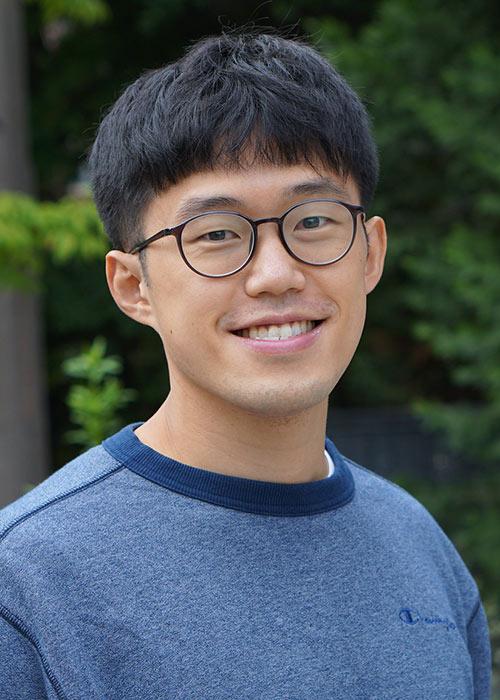
- Hometown: Seoul, Korea
- Program & Year: PhD, fourth year
- Advisors: Gary Chan and Eardi Lila
“I study biostatistics because I care about developing state-of-the-art methods that can be implemented to complex data analysis to tackle public health issues or enhance healthcare services. I am motivated by developing methods for which pre-existing methods have inherent or practical limitations for a specific type of data.”
Q&A
What motivated you to pursue a PhD in biostatistics?
First, there are a plethora of fields where statistics is used, and I was particularly motivated by the health care applications. At the same time, I wanted to learn advanced theory in statistics, which led me to pursue a PhD in Biostatistics.
While working as a biostatistician at a biopharmaceutical company in South Korea, I realized that so much more could be done to improve my statistical knowledge. Also, I wanted to be involved in projects that required cutting edge techniques. I came to the conclusion that pursuing a PhD was the most efficient way to do this.
I spent most of my free time working to publish research from my master's program. Completing the manuscript and enhancing its content in response to reviewer comments brought me great satisfaction, as I was seeing the work becoming polished. As I was also growing bored of the tasks from my workplace, I decided to seek a PhD in biostatistics.
Why UW Biostatistics?
UW Biostatistics has a training program that emphasizes both strong theory and application. Unlike statistics and biostatistics programs in other universities, the department requires students to go through intense training and evaluation processes to make sure they acquire the necessary skills and insights that are desirable for a doctoral level professional. Since I wanted to develop statistical methods that are practical and at the same time possess strong theoretical backgrounds, UW Biostatistics was an optimal choice.
Moreover, UW Biostatistics provides the students with so many options for choosing a research topic.The department has fabulous faculty who work on very interesting research topics. Also, the department is involved in inter-institution and inter-department collaborations, so students have a chance to work with professors outside of the department.
The fact that the UW is located in Seattle could also be a reason to choose UW Biostatistics. It is a city that has a fantastic harmony between the city vibe and green nature.
How would you describe your experience as a UW Biostatistics student?
As a UW Biostatistics student, I am privileged to meet and mingle with great people who are both talented and friendly. Despite the intensity of the program, there is always a cohort of peers with whom to discuss and collaborate. Moreover, the learning experience itself from the coursework and research significantly broaden my scope of statistical knowledge in both theory and applications. Also, there are faculty (and peers) who provide very helpful comments and ideas.
What research are you currently conducting?
I am currently involved in two research projects in the department. As part of my dissertation, I am working with Dr. Gary Chan and Dr. Eardi Lila to develop a new method for learning individualized treatment regime based on observation data that uses novel dimension reduction and weighting methods.This will allow us to use the vast library of observational data for decision making that would maximize the desired outcome with the accuracy that was previously achievable only with data generated from well-designed randomized control trial.
I am also working as a research assistant for Dr. Ting Ye. We are currently working on a project to develop a dimension reduction method for high dimensional mediation analysis. This would allow for a more accurate and efficient quantification of the indirect and direct effects when the mediator is high-dimensional as with parts of the brain.
What are your future plans and have they changed since you started your degree program?
I have not fully decided on my future plan. My original plan was to return to industry with my enhanced skills and insights gained from the PhD training. At the same time, however, I would also like to seek an academic position for the satisfaction that comes from learning and developing new ideas. In particular, I would like to delve more into my current research topic on dimension reduction and covariate balancing, and expand the techniques to be used for inference using more complicated data that comes from, for example, wearable devices or brain imaging.
What advice would you give to a student who is considering the UW Biostatistics PhD program?
For those who are considering the UW Biostatistics PhD program, one piece of advice that I would give is to prepare with the mindset to learn. Some students already have some background or experience in math or statistics, or have research experience in health care settings. The program, however, aims to provide students with training that emphasizes rigor in both theoretical foundations and practical applications. For example, students are trained to carefully analyze and interpret statistical outputs with precision, ensuring a thorough understanding of the results and their implications within a given context. Thus, prepare for there to be some discrepancy between your previous knowledge and intuition, and be open to learn.
Anything else you’d like people to know about you?
As an incoming student, you will for sure encounter a very supportive environment. Both the senior students, department administrators, and the faculty are always willing to assist students in finding research topics, in completing coursework, and in any other personal struggles. Such an environment is crucial for a person undergoing a long period of training for a high level degree.